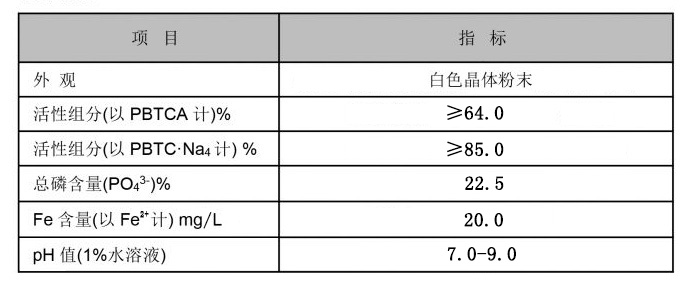diethylenetriamine penta methylene phosphonic acid
Diethylenetriamine Penta (Methylene Phosphonic Acid) An Overview
Diethylenetriamine penta(methylene phosphonic acid), commonly abbreviated as DTPMPA, is a significant chemical compound widely used in various industrial applications. As a phosphonic acid derivative, DTPMPA exhibits remarkable properties that make it crucial in several fields, particularly in water treatment and chemical manufacturing.
Chemical Structure and Properties
DTPMPA is characterized by its complex molecular structure, which includes multiple phosphonic acid groups connected to a diethylenetriamine backbone. This configuration contributes to its high chelation capacity, enabling it to effectively bind metal ions in solution. The compound's unique amphoteric nature allows it to function in varying pH conditions, making it versatile for different applications.
One of the most notable properties of DTPMPA is its strong scale inhibition ability. In industrial processes, such as cooling systems and boilers, the formation of scale deposits can significantly reduce efficiency, increasing maintenance costs and operational downtime. DTPMPA acts as an effective scale inhibitor, preventing the precipitation of calcium carbonate and other mineral scales. This attribute is particularly beneficial in prolonging the lifespan of equipment and ensuring smoother operations.
Applications in Water Treatment
The primary application of DTPMPA lies in water treatment. In industrial settings, it is commonly utilized in recirculating cooling systems, oilfield water management, and wastewater treatment. Its ability to chelate heavy metals like calcium, magnesium, and iron makes it an ideal choice for softening hard water. By preventing scale formation, DTPMPA not only enhances water quality but also improves energy efficiency and operational performance.
diethylenetriamine penta methylene phosphonic acid

Moreover, DTPMPA serves as a dispersant and stabilizer in various formulations. Its efficiency in controlling sludge and particulates enhances overall system performance, making it invaluable in both industrial water treatment and the manufacturing of cleaning agents.
Environmental and Safety Considerations
As industries increasingly focus on sustainability, the environmental profile of chemicals has gained prominence. DTPMPA is considered relatively environmentally friendly compared to other phosphonate compounds. It is biodegradable and presents lower toxicity levels, which makes it a preferred choice in formulations where environmental impact is a concern.
However, like all chemical substances, handling DTPMPA requires adherence to safety protocols. Proper personal protective equipment should be used, and safety data sheets should be observed to prevent any mishaps during usage.
Conclusion
In conclusion, diethylenetriamine penta(methylene phosphonic acid) demonstrates its importance across various sectors due to its excellent chelation and scale inhibition properties. As industries continue to evolve, the demand for effective and environmentally conscious solutions in water treatment and chemical processes will likely drive research and development in the field of phosphonic acids. DTPMPA stands out as a reliable compound, showcasing the continuous interplay between chemistry and industrial efficiency. With its broad range of applications and favorable environmental profile, DTPMPA is poised to play a crucial role in the future of sustainable industrial practices.
-
Pbtc Scale InhibitorPBTC: A Scale Protector for Industrial Water TreatmentNewsAug.05,2025
-
Organic Phosphonate: An Efficient Defender in the Field of Scale InhibitionNewsAug.05,2025
-
Hydrolyzed Polymaleic Anhydride: Green Pioneer in Scale Inhibition FieldNewsAug.05,2025
-
PAPEMP Polyamino Polyether Methylene Phosphonic Acid For SaleNewsAug.05,2025
-
Flocculant Water Treatment: A Pioneer in Purification in the Field of Water TreatmentNewsAug.05,2025
-
Benzyl Isothiazolinone: An Efficient and Broad-Spectrum Antibacterial Protective GuardNewsAug.05,2025





